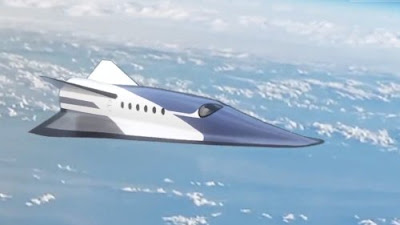NASA's Dragonfly Mission
Dragonfly Rotorcraft-Lander Goes to Saturn's Largest Moon - Titan
NASA Searching for Life and the Origins of Life on Earth
NASA has just announced plans to launch its Dragonfly Mission in 2025. It's an audacious plan to land the Dragonfly rotorcraft lander on Titan, which is Saturn's largest moon. It's the only moon in the solar system that has an atmosphere. According to NASA, Titan is most comparable to early Earth and, most importantly, it has the ingredients to support life. This is NASA's next mission to a new destination. It will also mark the first time that a multi-rotor vehicle is deployed on another planet.
Mission Out of This World
Dragonfly has the capacity to fly 100 miles through Titan's thick and cold atmosphere. It will make trips on a daily basis to a number of test sites. The terrain is diverse and includes oceans, rivers, dunes, lakes and craters. Saturn and its moons are ten times farther away from the Sun than the Earth is. There is water on Titan but its so cold, given the distance from the sun, that the water is frozen all of the time. NASA believes Dragonfly's exploration of Titan on the ground and in the air may reveal the processes that led to the origins of life on Earth.
Touchdown on Titan
The Dragonfly drone will land on Titan in 2034. The journey consists of 888 million-miles. Dragonfly will search for any signs of life past or present. NASA says its instruments can evaluate organic chemistry and "the chemical signature of past and present life". There is an abundance of nitrogen and methane on Titan and NASA scientists believe there may be complex organic molecules, that could be the basis of life. It will be a fascinating journey into outer space to search for the origins of life here on Earth.
 |
| Source: NASA's Dragonfly Artist Rendering |
NASA Searching for Life and the Origins of Life on Earth
NASA has just announced plans to launch its Dragonfly Mission in 2025. It's an audacious plan to land the Dragonfly rotorcraft lander on Titan, which is Saturn's largest moon. It's the only moon in the solar system that has an atmosphere. According to NASA, Titan is most comparable to early Earth and, most importantly, it has the ingredients to support life. This is NASA's next mission to a new destination. It will also mark the first time that a multi-rotor vehicle is deployed on another planet.
 |
| Source: NASA - Titan |
Mission Out of This World
Dragonfly has the capacity to fly 100 miles through Titan's thick and cold atmosphere. It will make trips on a daily basis to a number of test sites. The terrain is diverse and includes oceans, rivers, dunes, lakes and craters. Saturn and its moons are ten times farther away from the Sun than the Earth is. There is water on Titan but its so cold, given the distance from the sun, that the water is frozen all of the time. NASA believes Dragonfly's exploration of Titan on the ground and in the air may reveal the processes that led to the origins of life on Earth.
Touchdown on Titan
The Dragonfly drone will land on Titan in 2034. The journey consists of 888 million-miles. Dragonfly will search for any signs of life past or present. NASA says its instruments can evaluate organic chemistry and "the chemical signature of past and present life". There is an abundance of nitrogen and methane on Titan and NASA scientists believe there may be complex organic molecules, that could be the basis of life. It will be a fascinating journey into outer space to search for the origins of life here on Earth.



Comments
Post a Comment